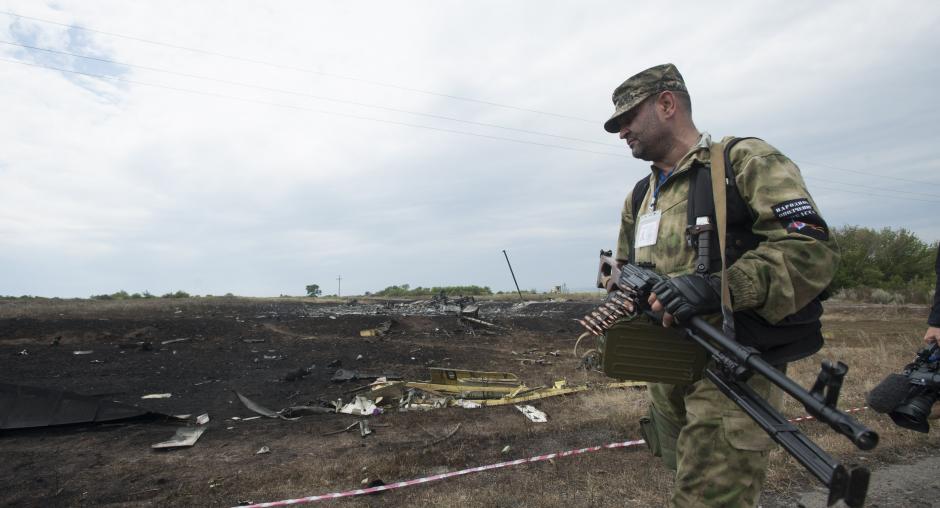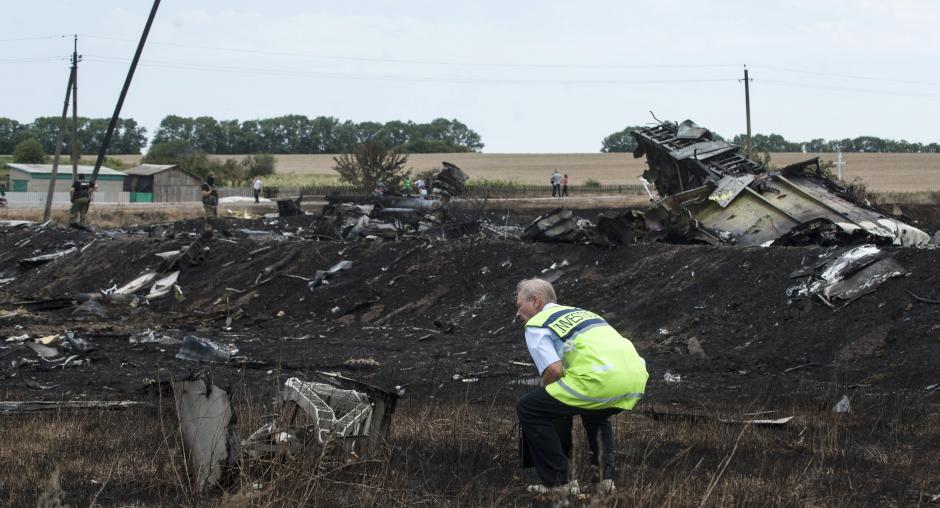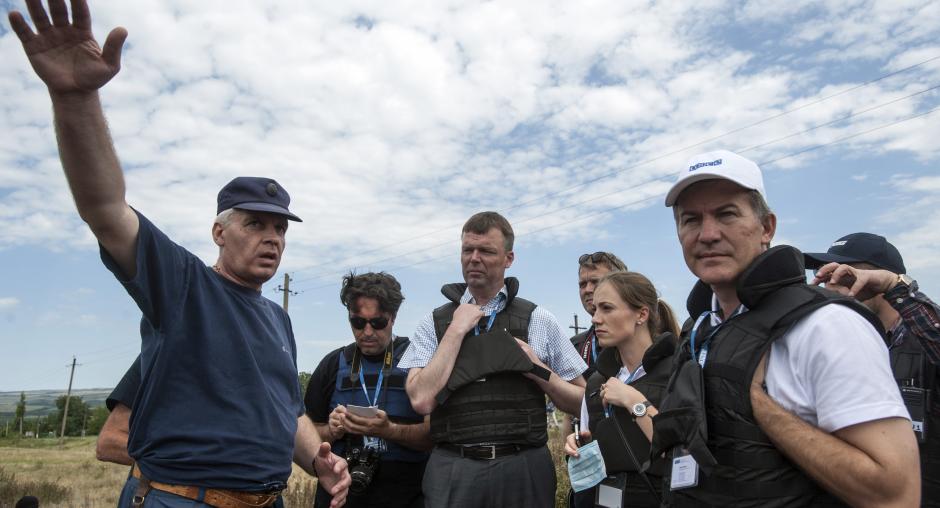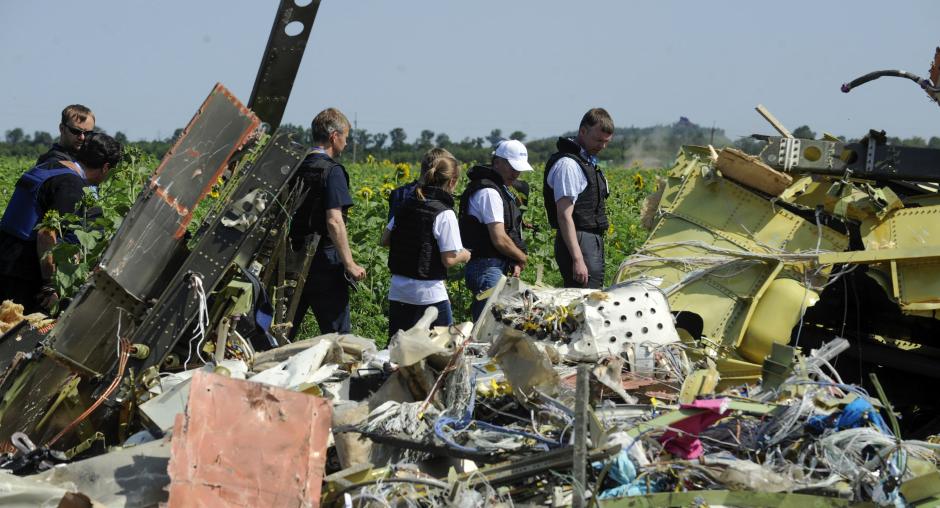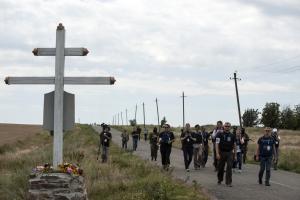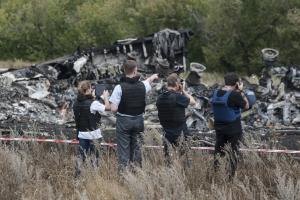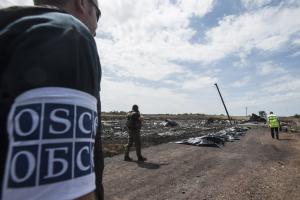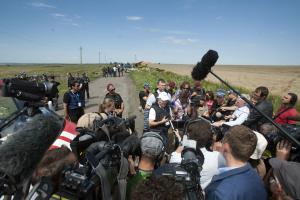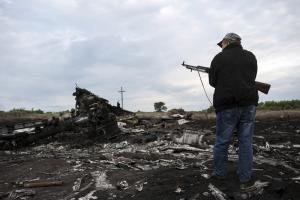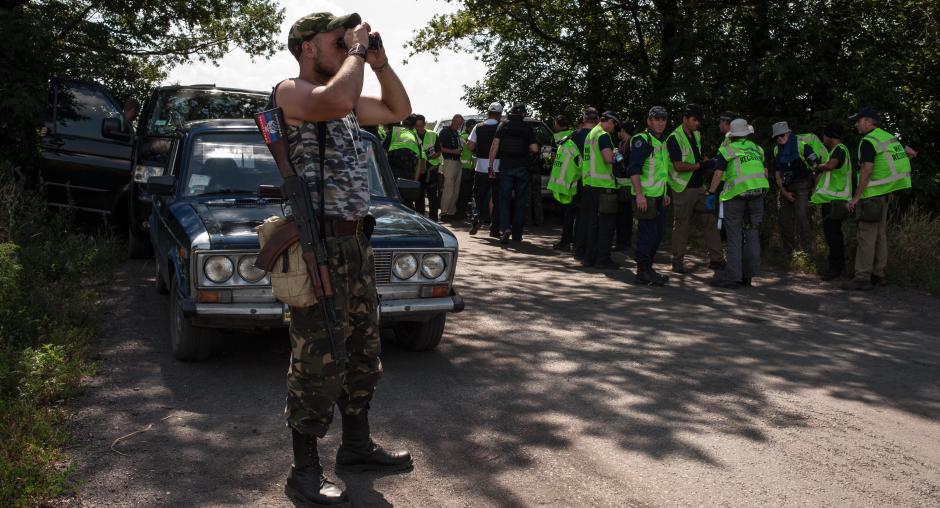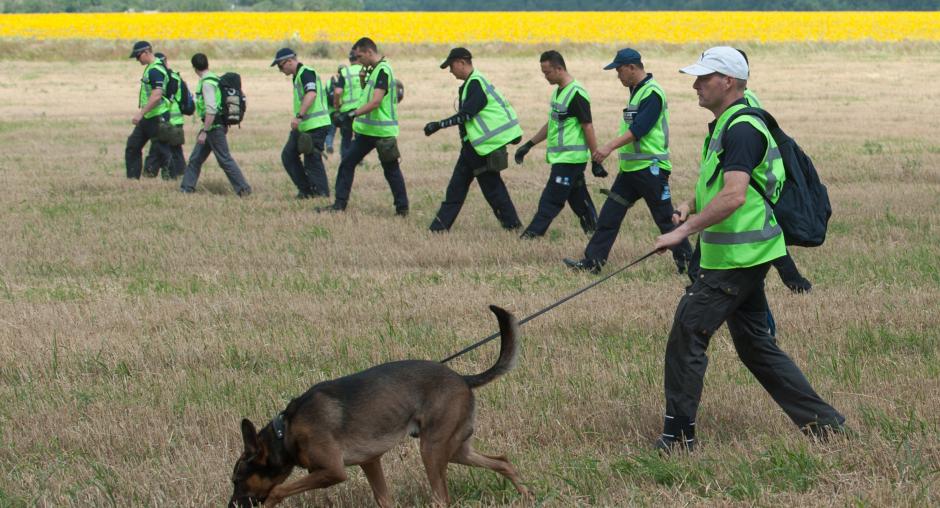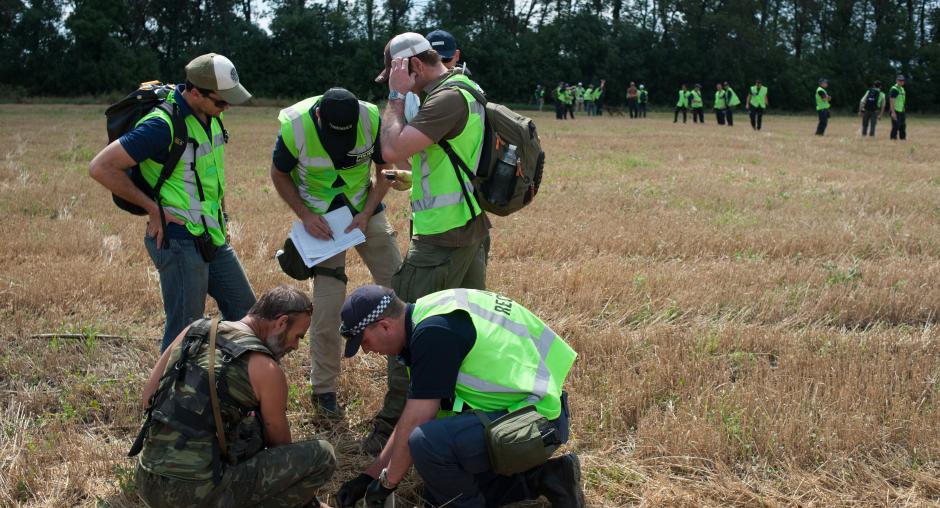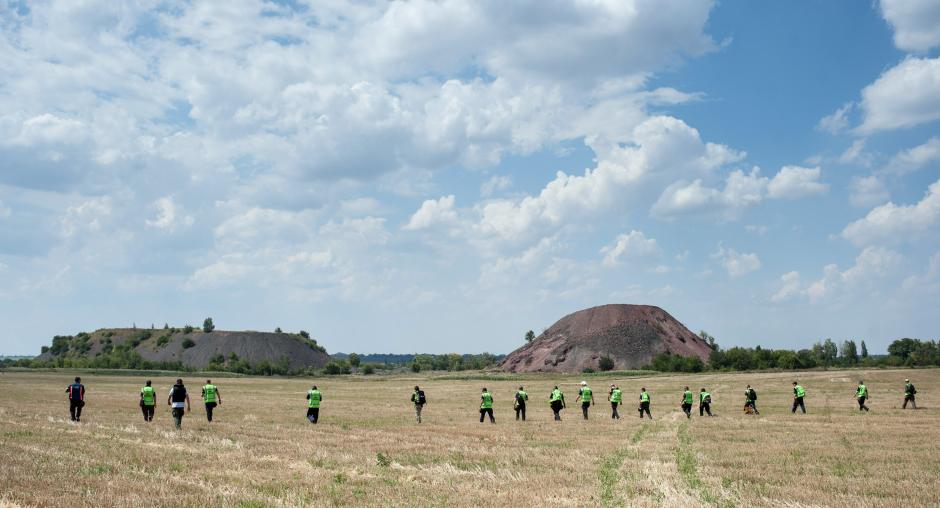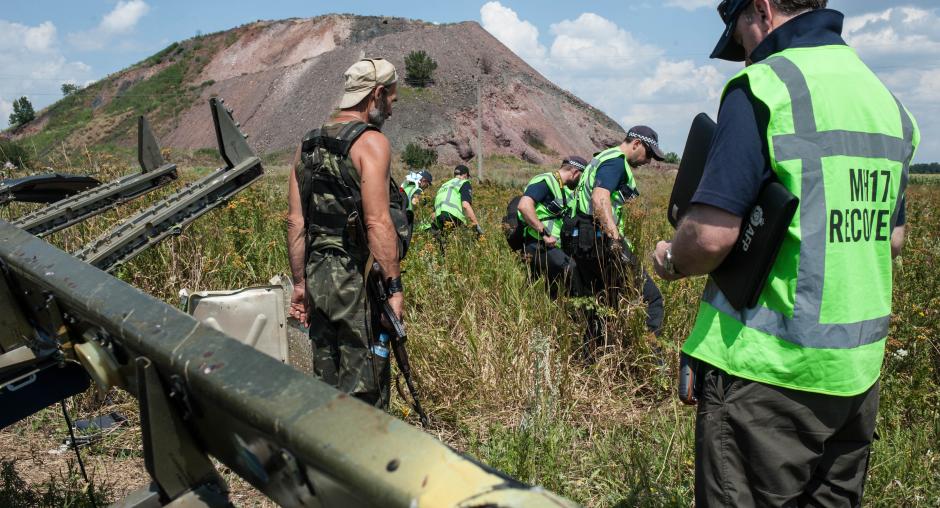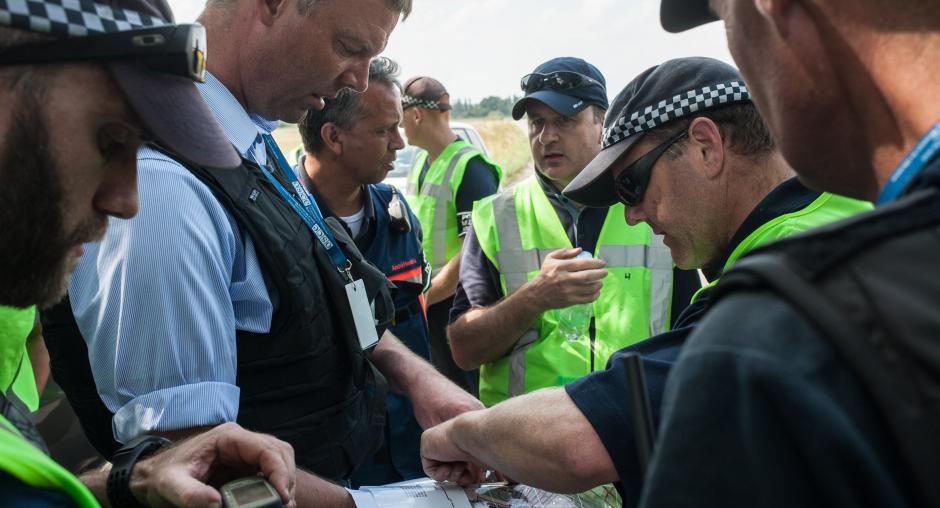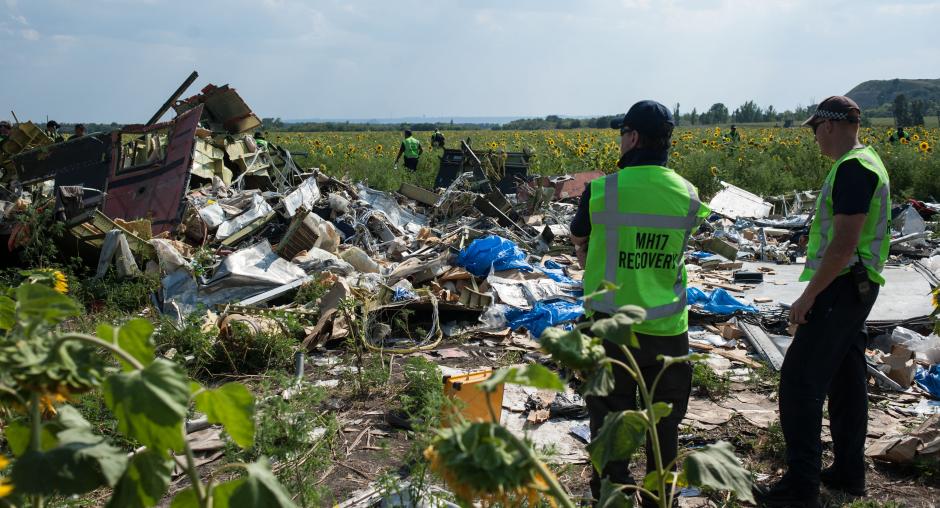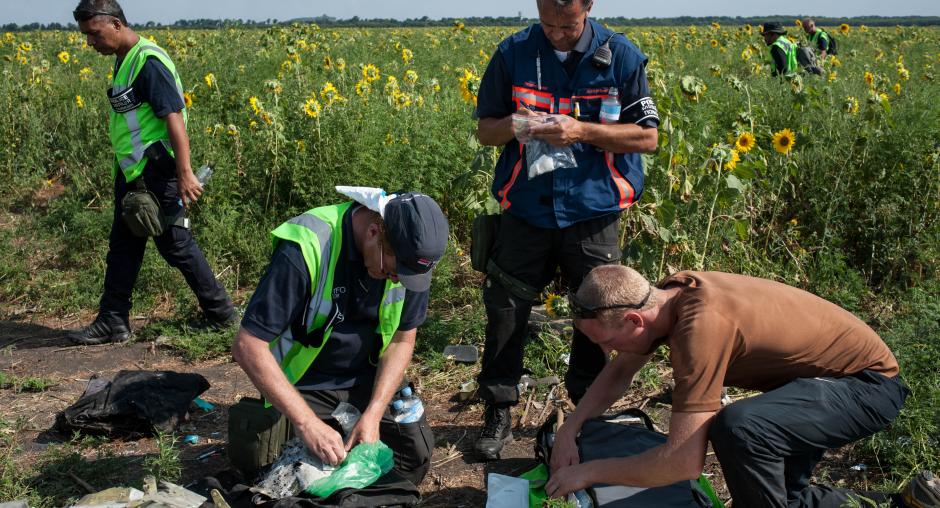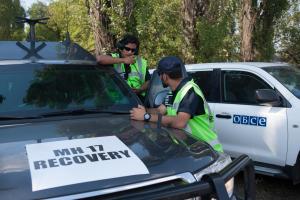MH17: Timeline of a tragedy
Commemorating the victims
KYIV, 16 July 2015 – OSCE Special Monitoring Mission Chief Monitor Ertugrul Apakan will lead tomorrow a minute of silence in honour of the victims of flight MH17, downed over Ukraine one year ago... Read more
#OSCE_SMM held min of silence in honour of the victims of #MH17 &present at the crash site to commemorate the tragedy pic.twitter.com/CFo435oCxG
— СММ ОБСЄ в Україні (@OSCE_SMM) July 17, 2015Access all information about the OSCE's role in the aftermath of the MH17 tragedy >>
Timeline of a tragedy
On the afternoon of 17 July 2014, news quickly spread that a passenger airliner had come down in eastern Ukraine, in territory controlled by separatists of the so-called ‘Donetsk People's Republic’.
The Trilateral Contact Group of senior representatives of Ukraine, the Russian Federation and the OSCE acted quickly in convening a video conference with representatives of separatist groups in Donetsk. The representatives committed to allow both the monitors and international investigators access to the crash site.
#OSCE Chair on Malaysian crash. @OSCE Contact group talks with separatists groups gained agreement on access to site http://t.co/dvq0ReR3Oy
— Cathie Burton (@catheebee) July 18, 2014
The OSCE Special Monitoring Mission pre-positioned in Donetsk on the morning of 18 July. The crash site was in the same area of Donetsk region as four civilian OSCE monitors were detained for over a month, being released only a few weeks before.
Our advance team enroute to E. Ukraine via MI-8M. #MH17 pic.twitter.com/yCLDafaQmO
— СММ ОБСЄ в Україні (@OSCE_SMM) July 18, 2014
Despite the assurances of the separatists as well as an international outcry, the monitors were initially given only very limited access to the crash site. They vowed to return until full access was granted and the security situation could be fully assessed.
EXCLUSIVE: OSCE’s @mikeybbq, member of the 1st team at #MH17 crash site, describes the carnage http://t.co/PWWeS3CdnY pic.twitter.com/oDksm3ZwUI
— Christiane Amanpour (@camanpour) July 18, 2014
Around the same time as the monitors arrived to the crash scene, the OSCE Permanent Council issued a declaration calling for access for the OSCE monitors, and a full international investigation.
OSCE Permanent Council adopts declaration on #MH17 crash in Ukraine, urges access to site, independent investigation http://t.co/RHmmsVbjgA
— OSCE (@OSCE) July 18, 2014
The team returned to the crash site on 19th July, and gained only a little more access. On the 20th, they surveyed the bodies which had been transferred to refrigerated train cars at Torez railway station.
SMM to #Ukraine told number of bodies stored in refrigerated train cars in Torez: 196. Cannot yet independently verify #MH17
— СММ ОБСЄ в Україні (@OSCE_SMM) July 20, 2014
They then returned on the 21st, along with Dutch investigators, who supervised the sealing of the train cars.
Dutch forensic experts arrive on #MH17 site with @OSCE guidance. And the masked separatists .. Photo from @obk pic.twitter.com/aHXxDrxDvv
— Gerard van Mourik (@gerardvanmourik) July 21, 2014
The photos in the gallery above are mostly from 20 July, when the monitors were finally given more freedom to examine the site. The job of the monitors is not to assign blame for the incident, but only to find facts about the security situation in the areas, and report back to the OSCE participating states.
The team issued a spot report of their visit to the impact site on 21 July where they observed the loading of body bags on to the refrigerated carriages of a train bound for Kharkiv.
The monitors publish reports each day for the press and the public. You can also find online constantly updated information on the OSCE response to the crisis in and around Ukraine.
The SMM team were in contact with the media throughout the operation, and have continued to do so to ensure transparency about their role in Ukraine, and to provide impartial information about the situation on the ground.
LISTEN: TODAY's update by Michael Bociurkiw, Spox of .@OSCE_SMM on #OSCE's work at #MH17 crash site http://t.co/mWd6yqhlwH .@uacrisis
— OSCE (@OSCE) July 21, 2014
OSCE assists international investigators
The conflict in eastern Ukraine made the removal of MH17 wreckage impossible for several months. On 11 November 2014, the SMM facilitated access for the MH17 recovery team to the MH17 crash site (Rozsypne and Hrabove villages).
The purpose of the visit by the MH17 recovery team was to carry out site surveys for subsequent wreckage removal and search for human remains.
After numerous negotiations led by the SMM, the agreement on the start of debris removal from the crash site was reached with all the sides. On 14 November 2014, the recovery work began. The SMM continued to facilitate access to the crash site during the entire recovery process.
Recovery of #MH17 debris continues 5th day in row. SMM to #Ukraine facilitating access to the site, and brokered arrangement for this phase
— СММ ОБСЄ в Україні (@OSCE_SMM) November 20, 2014
On 23 November 2014, recovery of the wreckage from the MH17 crash was completed and debris sent to Kharkiv for further transportation to the Netherlands.
Dutch complete recovery of MH17 wreckage http://t.co/WR50XnBmUH pic.twitter.com/hPZ0z9swmO
— NBC Nightly News (@NBCNightlyNews) November 23, 2014
Without the efforts of the Organization for Security and Co-operation in Europe the Netherlands would never have been able to make so much progress in repatriating human remains, personal belongings and wreckage from flight MH17.
Bert Koenders Minister of Foreign Affairs of the Netherlands
OSCE Ministerial Council, 4 December 2014
The OSCE, and the SMM in particular, will continue to do the utmost within their mandate in order to facilitate investigation of the tragic crash of the Malaysia Airlines flight MH17 in Ukraine.
Up-to-the minute news from the OSCE can be found by following our Twitter feeds: @OSCE and @OSCE_SMM. All photos are credited (OSCE/Evgeniy Maloletka).


